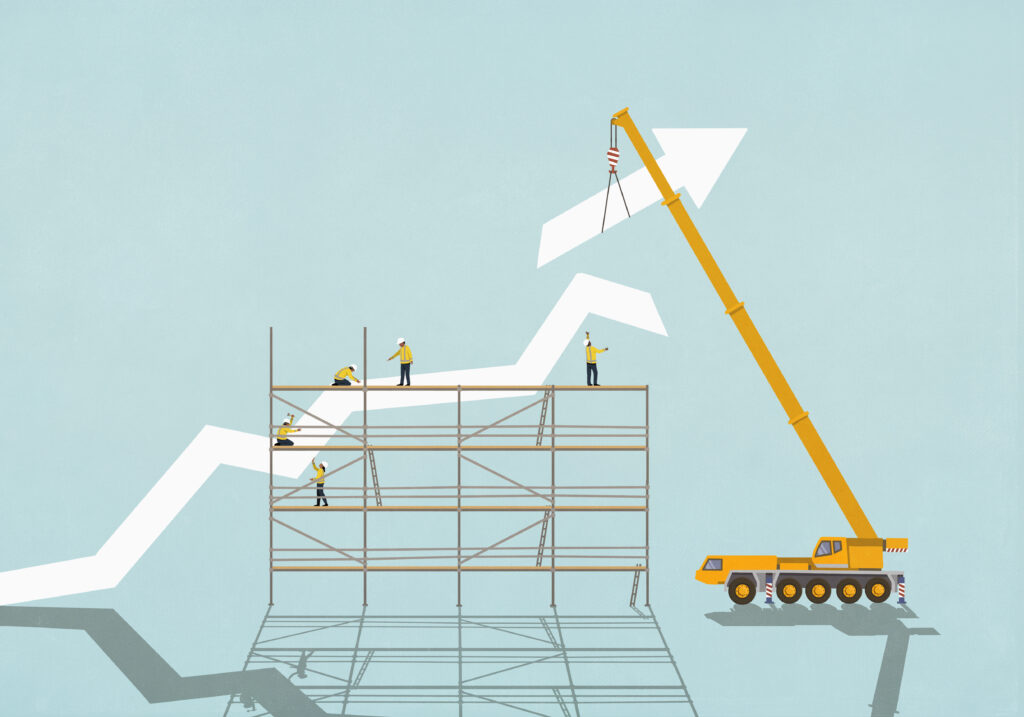

In 2019, a record 9,300 retail stores closed in the United States, a nearly 60% increase from the previous year.
Gap brought the curtain down on 230 stores, and Barneys New York shuttered all but its outlet stores. Forever 21 closed 111 stores, Dress Barn 650, Shopko 371, and Gymboree more than 800. Bankrupt Sears closed 96 stores, leaving 182 in a portfolio that once boasted 3,500.
But in the wake of the COVID-19 pandemic, the retail segment in 2024 is experiencing a turnaround bestowed by pent-up consumer demand for social connections and singular experiences. “Retail has always been about what the consumer wants, evolving with their interests and needs,” says Chris Maguire, CEO and chairman at SRS Real Estate Partners, a Dallas, Texas-based commercial real estate services firm with 29 offices across North America.
Human wants, interests, and needs are igniting extraordinary innovations in brick-and-mortar retail buildings and surroundings. While retail growth strategy in the pre-pandemic past was predicated on opening more stores, today’s approach involves opening new store concepts to see if they scale.
“In the 1950s and 1960s in Dallas, where I’ve lived for the past 60 years, my generation went to Woolworth’s and Sears, which were pretty much the same, these big boxes filled with racks of inventory,” says Maguire, who co-founded SRS with legendary Dallas Cowboys quarterback Roger Staubach in 1986. “Consumers shopped the racks, picked up what they were looking for, and walked out. Salespeople were more of a bother than a help.”
The advent of large, enclosed, and air-conditioned malls in the mid-1950s addressed these “in and out” shortcomings. Anchored by large department stores like Macy’s or JCPenney, and encircled by a flotilla of smaller fashion shops, shoe stores, and food courts, malls flourished until the e-commerce revolution led by Amazon made it more convenient and affordable to shop online.
Major retailers responded by following the leader, copying the so-called “Amazon effect” to offer frictionless, fast-paced buying and delivery options, along with in-store pickup. The pandemic increased the pace of these consumer-focused changes, as state lockdowns and other restrictions were imposed. Nearly 32,000 retail and food-service stores closed during the pandemic. Many shopping malls resembled ghost towns.
Landlords and tenants determined the best way to bring customers back was to “wow” them in smaller spaces. One new concept calls for building smaller physical formats between 1,000 and 2,000 square feet. Digital-focused retailers like Todd Snyder, Warby Parker, Bonobos, and Casper, whose businesses flourished during the pandemic, have expanded their brick-and-mortar operations. Menswear retailer Todd Snyder’s flagship store in Manhattan offers curated art exhibits and rare wine and whiskey tastings. Tailors provide bespoke suiting, and “private client style advisors” are on hand to help match clients with preferred looks.
Even the venerable Nordstrom, where stores average around 140,000 square feet, opened a set of smaller-footprint boutiques at 2,000 to 3,000 square feet in Manhattan and Beverly Hills. Shoppers there were indulged with free glasses of wine, espresso, or a cold-pressed juice and given free advice by a fashion stylist.
Canada Goose flew further. Five of the company’s more than 50 extreme weather outerwear stores feature minus 27 degree Fahrenheit cold rooms with holograms creating the look of a frigid 3-D environment (think: Arctic landscapes, falling snow, and icy rock formations on the interior walls). Shoppers walking on the cold room’s floor hear the sound of cracking ice with each step.
“A new category called ‘experiential retail’ came alive,” says Maguire, “where you go shopping at a retail environment [and are treated to] immersive multimedia experiences and art installations like Meow Wolf and Imagine Picasso.”
From its near (and predicted) apocalypse, retail has again defied the skeptics, “coming back full circle,” the veteran retail expert maintains.
When this interview took place, Maguire had just returned from ICSC Las Vegas 2024, a gathering of nearly 40,000 commercial real estate professionals. Asked what the mood was like at the three-day event, he says, “People feel a tailwind whipping up. Spirits were pretty high.”




